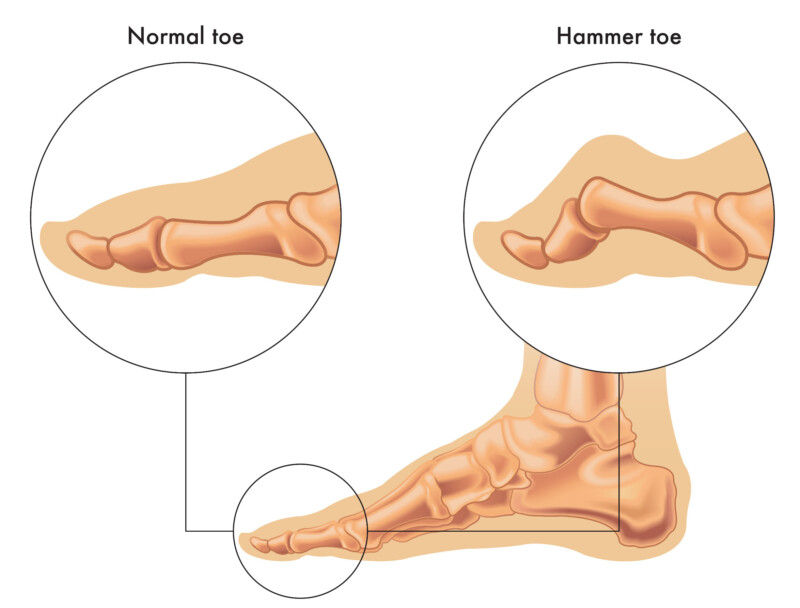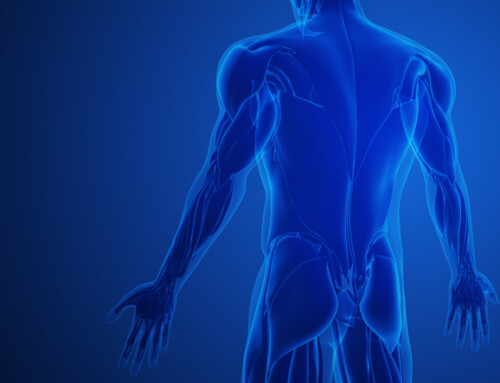By: Gina L. Ellis, SPT
What is Hammer toe?
Hammer toe is the result of muscular imbalance that results in poor foot function. Shortening of foot muscles leads to a contracture of the joints of the great toe resulting in a big toe that is bent or crooked, resembling a hammer.
- Increased or decreased mobility of the arch of the foot and loss of mobility in the great toe.
- Spasm/cramping sensation of the big toe.
- Corns/calluses or redness on the toe due to friction against improperly fitting footwear.
- Balance problems.
Causes of Hammer toe:
Hammer toe can occur in response to faulty footwear, trauma, systemic illness, heredity, or tendon rupture. Abnormal foot posture/alignment significantly impacts the lower extremities and can increase the risk of injury. Hammer toe can occur in any toe, more commonly in females than males.
Key Facts:
• High-heeled shoes can lead to the shortening of the muscles of the calves, causing hammer toe and other associated symptoms.
• Increased mobility of the foot/ankle: fallen arches, flat feet, genu valgum/ “knock knees”, and poor balance.
• Decreased mobility: high arches, rigid arches, and genu varum/ “bow-leggedness.”
• Presence/diagnosis of various forms of arthritis, bunions, scleroderma, and gout.
Presentation and Progression:
Limited range of motion of the first toe or the inability to extend/straighten the great toe without pain can result from muscular imbalance and lead to contracture of the sole/plantar surface of the foot. The stiffening of the toe becomes greater over time and leads to problems with walking, standing from a seated position, and going up and down stairs. Continued stress, increased pressure, and inflammation causes repetitive injury to the structures of the foot, and fatigue can lead to dislocation of the big toe.
• Increased difficulty finding comfortable shoes.
• Increased irritation from shoes can cause corns, calluses, or pressure injuries.
• The onset of symptoms like leg fatigue, low back pain, plantar fasciitis, and lateral knee and ankle pain.
Self-care, Screening, and Prevention of Hammer toe
Foot posture affects overall body mechanics, functioning, and participation in everyday life. So, even though your physical therapist can screen foot posture and function in the clinic and guide treatment to address impairments, you can prevent and manage hammer toe at home.
Hammer toe treatment recommendations:
• Wear appropriate footwear: Use the STAR method for shoe comfort.
• Look at the bottom of your shoe. Examine a well-used pair of sneakers. The wear pattern on the shoe’s sole should be horizontal across the widest part of the sole, where the ball of your foot contacts the ground. With the greatest wear at the area where the first, second, and third toe would be. A small amount of wear on the lateral aspect of the heel of the shoe is OK.
• An over-pronated foot will create a wear pattern lengthwise/oblique on the shoe’s sole.
References
1. Dutton M. Dutton’s Orthopaedic Examination, Evaluation, And Intervention.; 1056; 1092-93(hallux valgus).
2. Kisner C, Colby L, Borstad J. Therapeutic Exercise.; 856.
3. Carroll LA, Paulseth S, Martin RL. Forefoot Injuries in Athletes: Integration of the Movement System. Int J Sports Phys Ther. 2022 Jan 1;17(1):81-89. doi: 10.26603/001c.30021. PMID: 35024208; PMCID: PMC8720253.
4. Ramsey K. Foot Orthotics. Musculoskeletal Systems II. 2019.
5. Hammertoe: Podimedic Clinic: podiatrist in Anjou and Lachine. Podimedic.
Capital Area Physical Therapy & Wellness offers treatment options for the symptoms of hammer toe. Our experienced providers serve the Upstate NY Malta / Saratoga / Glens Falls & Queensbury region with physical therapy services for hammer toe and hammer toe symptoms.
Call (518) 289-5242 to schedule an evaluation at any of our locations, or to learn more about the services provided by our physical therapists.






